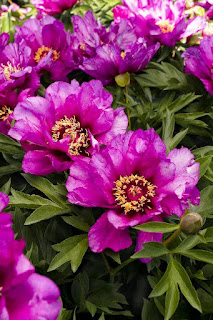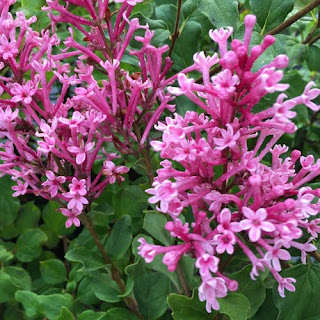I write about gardening in Vermont for the North Star Journal in Danville, Vermont. Somehow my post for January didn't get published so here it is for you. Slightly dated but still some good information for gardeners. As I write today, I woke up to -7.2° and the temperature dropped to -11.2° before the sun began to warm things. Heading for 2 PM now and we are up to +18.3°. What a pleasure. Read on!
WINTER
BEGINNINGS
It’s almost noon on December 7th
and even though you are probably reading this days or weeks later, I am happy
to report that it has turned out to be a wonderful, bright sunny day after the
terrible night of wind, snow squalls and power outages. Clouds are coming in
but at 30.9° it’s far better than last night’s 10.2° which was accompanied by
28 mph winds. It’s days such as today when I ask myself what kind of winter we should expect.
Back in my early years, I remember asking
Warner Townsend, a farmer who lived and worked down the road from us in
Woodstock, how you could tell what kind of winter it would be. It was late autumn
at the time and the leaves had mostly left the trees. He wasn’t a large man but
he was big on worldly intelligence and over the years I spent lots of time with
him around the barn, in the fields, with the workhorses, and in the sugar
house. He always taught me important things.
Warner looked up into the trees and turned
around, finally stopping and pointing upward. “There’s your answer,” he
replied, pointing to what I learned was a bald-faced wasp nest high up in a
maple tree. I’m thinking back on it now and trying to remember how high it was
in the tree but I am sure it was at least 15-18 feet up and was a very large,
grey paper nest. Warner explained what that meant and many years later I
remember reading a couple lines that echoed his explanation. “See how high the
hornet’s nest. ‘Twill tell how high the snow will rest.” My assumption was that
the snow would never be 18 feet deep but the nest would be high enough to stay
above deep snow. I watched that nest all winter and the snow did get deep but the
nest was always safe.
So as the snow deepens in Vermont, our
ability to garden outside ceases but that doesn’t mean we cannot continue with
some garden-related tasks. In December when there are some warmer days and
there are still some snowfalls where the snow clings to trees, it’s a good time
to take pictures of all your gardens. The snow on trees and shrubs delineates
the bones of your gardens and offers reminders to what perennials and bulbs you
have planted nearby. Enlarge the pictures and print them off from your computer
and you’ll have the basis of a map of your gardens. Sketch on critical
dimensions and the names of plants of concern or places where there’s space for
additional plants and you are on your way. Print a couple-three pages of each picture
and start a file just in case you misplace the maps before springtime. They
will be useful for the life of the garden. With the prints, you’ll amaze
yourself what a great garden designer you really are. The maps will help you
remember plant color, height and width, and perhaps even bloom time. Never
forget what a benefit to gardens plants with height become even if they are
under 5 feet tall and slender. Height in a garden has a way of making the
overall garden look bigger even if it looks small to the eye. Start a folder,
add lists of plants you want to incorporate (or remove) and try to broaden the
bloom times your gardens cover. It’s not difficult and certainly is rewarding.
Not everyone has construction skills but
if you even think you do, winter is a great time to try building hypertufa
plant containers, birdhouses or pollinator houses. The internet has a plethora
of recipes for hypertufa and DIY instructions. It’s messy but it’s inexpensive
and you can produce all sorts of shapes and sizes of planting containers to
fill with favorite plants come spring. We always have some at the flower farm
that friend Jody makes for us and we always try to share how to build these.
Give them some thought.
Birds and pollinators go hand in hand with
good gardens and houses for each of these. As for birds, The Cornell University
Lab of Ornithology is a wonderful website for everything from bird
identification, bird voices, nesting habits and it includes directions for
building birdhouses specific to the birds you see. Take a look and if you’re
up to the task, try to build birdhouses to match your birds or birds you want
to see in your gardens. Here’s a place to start. https://www.allaboutbirds.org/. As for pollinator
houses, these are easy to build and once again, there are many plans available
online.
Between now and spring seek out new
gardening magazines, buy subscriptions or read online, attend lectures and join
related groups. It may be cold and snowy but there are plenty of ways to
enhance your property and bring in more birds, butterflies, bees, and moths. I
know you’ll enjoy it all!
Writing from the mountain above Peacham
Pond where the wind has slowed and the birds are asking that I fill the
feeders….again.















